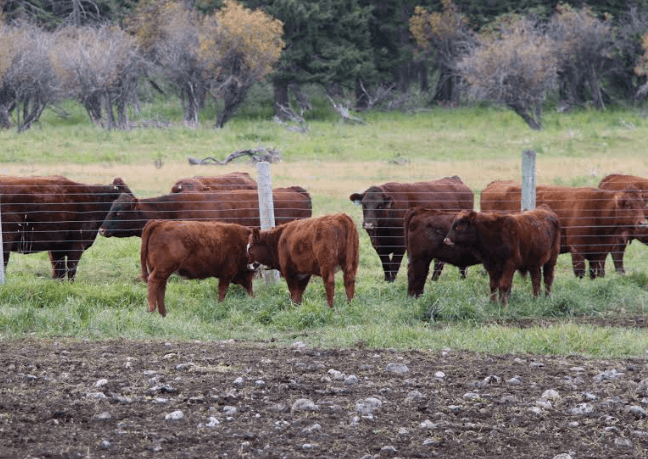
The global beef industry confronts greater challenges as environmental groups call out the sector for what they say are its negative impacts on the planet, communities and climate change. While the evidence suggests beef consumption in the U.S. and Canada may have increased last year after 40 years of decline, it continues to decline in other developed countries.
Environmental and health concerns explain part of this long-term decrease. Earlier this year, the Netherlands‘ health authority recommended that citizens reduce meat consumption to less than 500 grams (17.6 ounces) a week. And calls for a tax on red meat echoed across Denmark. Then there are the human rights issues, as in Canada, where the beef industry in Alberta says it is dependent on foreign workers to perform jobs in meatpacking plants that residents do not want.
Nevertheless, there are opportunities for the beef industry, starting with the resurgence in the popularity of the artisan, artistic and creative burger joints that have spread like wildfire across North America and overseas. And while the very notion of putting “health” and “beef” in the same sentence, this meat arguably does have its share of health benefits.
David Hughes, a professor at Imperial College in London, told an audience at this week’s Global Conference for Sustainable Beef in Banff, Alberta, that the industry indeed has opportunities. But for the beef industry to gain the trust of consumers and to thrive, it must understand, “It’s about value and it’s about values.”
In other words, the beef industry must demonstrate that it can be a good buy for consumers, and not even try to compete with cheaper forms of protein, such as chicken or freshwater fish like tilapia, catfish or basa, on price. Yet beef companies also must prove they have values, such as a positive social impact, animal welfare and a good story – as in that local fifth-generation rancher raising cattle. And Dr. Hughes also made it clear that in a world where consumers want the beef they buy to be responsibly raised, companies cannot expect to develop such meat products and expect a premium. “If you’re not ‘green,’ there’s a serious discount,” he said during his keynote talk on Wednesday morning, “but if you’re not, there’s a penalty.”
On those points, beef industries across the world, which are feeling the social, environmental and economic pressure of becoming more sustainable and responsible, should take notes from some recent progress and challenges as reported by the Canadian beef industry.
According to a new report issued by the Canadian Roundtable For Sustainable Beef (CRSB), a two-year study has shown where the beef industry has made progress, and offers suggestions as to how it can improve.
On the environmental front, the CRSB claims it has a total greenhouse gas emissions footprint of approximately 25.1 pounds per pound of beef. Most of those emissions come at the farming stage, which account for almost 75 percent of that footprint. That is slightly higher than the beef industry in the U.S., which has one of the world’s more efficient beef industries (where the per-pound GHG footprint ranges anywhere from 10 pounds to 22 pounds, depending on the source cited) due to the concentration of the industry and advancements in cattle feed, reproductive technology and reduced time for animals to reach their final weight.
On water, Canadian beef producers could be setting the standard of water efficiency at approximately 136 gallons of water needed per pound of beef. Contrast that with the industry south of the border, where American beef producers at a most conservative rate are using somewhere around 317 gallons per pound.
Improved efficiencies across the industry’s value chain can also mitigate the beef industry’s overall environmental impact. For example, 19 percent of all beef processed in Canada is wasted due to poor trimming procedures at packing plants, spoilage and the tossing away of expired meat. Reducing that waste by 50 percent could reduce carbon emissions per pound of beef by an additional 6.5 pounds – as well as conserving an additional 16 gallons of water needed to process that same amount of beef.
The study, which was led by Deloitte and Canfax Research Services of Calgary, is an important step by the beef industry as it offers a frank assessment of where the greatest opportunities for improvement lie. It is easy to get lost in the weeds of the report and challenge the figures related to carbon emissions, water consumption and safety incidents. But the real value of this report is that it offers a ideas for a tool that beef industry groups in other countries can use to assess how they can improve both their performance, as well as the level of transparency that is offered to stakeholders.
Image credit: Global Roundtable for Sustainable Beef

Leon Kaye has written for 3p since 2010 and become executive editor in 2018. His previous work includes writing for the Guardian as well as other online and print publications. In addition, he's worked in sales executive roles within technology and financial research companies, as well as for a public relations firm, for which he consulted with one of the globe’s leading sustainability initiatives. Currently living in Central California, he’s traveled to 70-plus countries and has lived and worked in South Korea, the United Arab Emirates and Uruguay.
Leon’s an alum of Fresno State, the University of Maryland, Baltimore County and the University of Southern California's Marshall Business School. He enjoys traveling abroad as well as exploring California’s Central Coast and the Sierra Nevadas.














